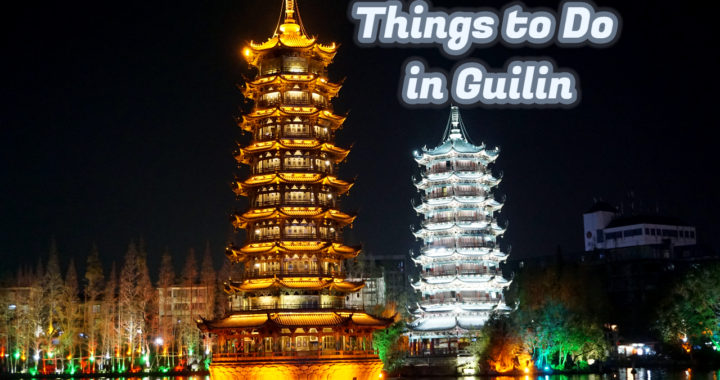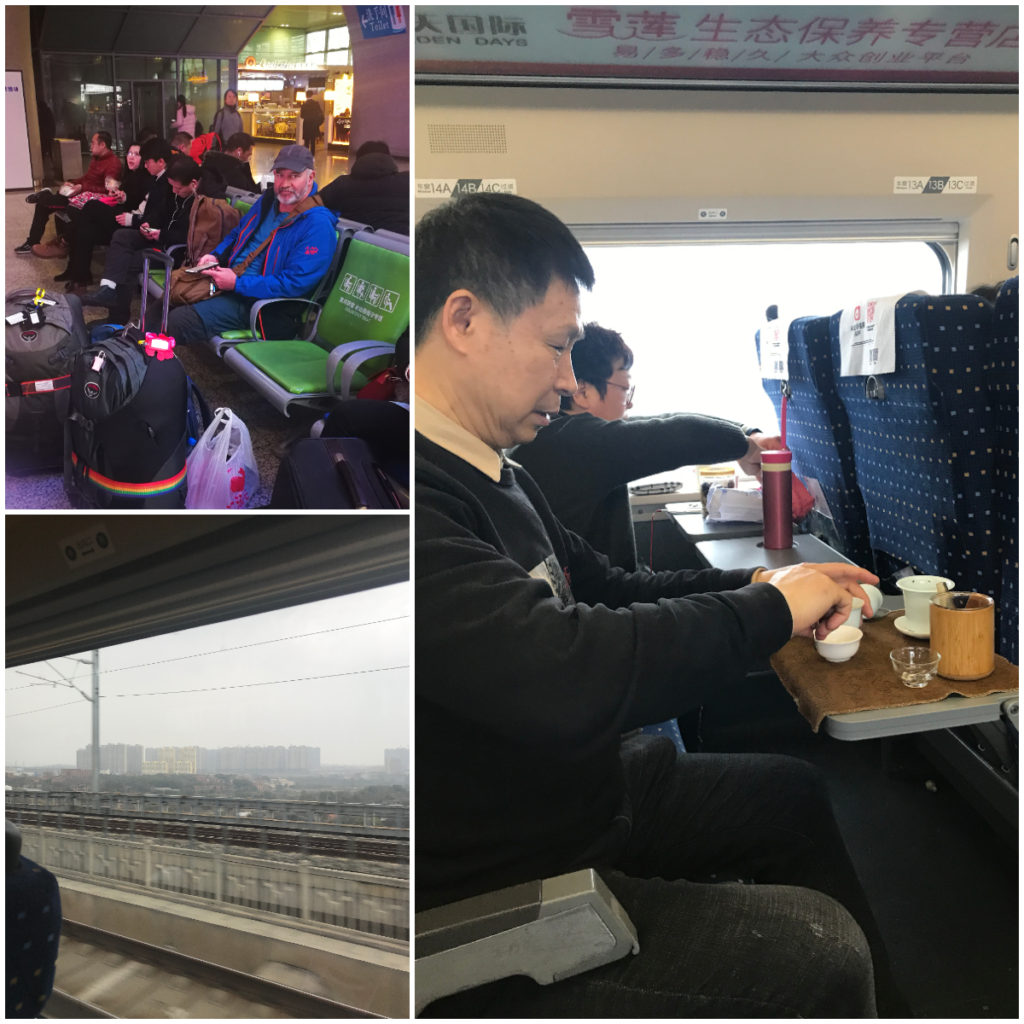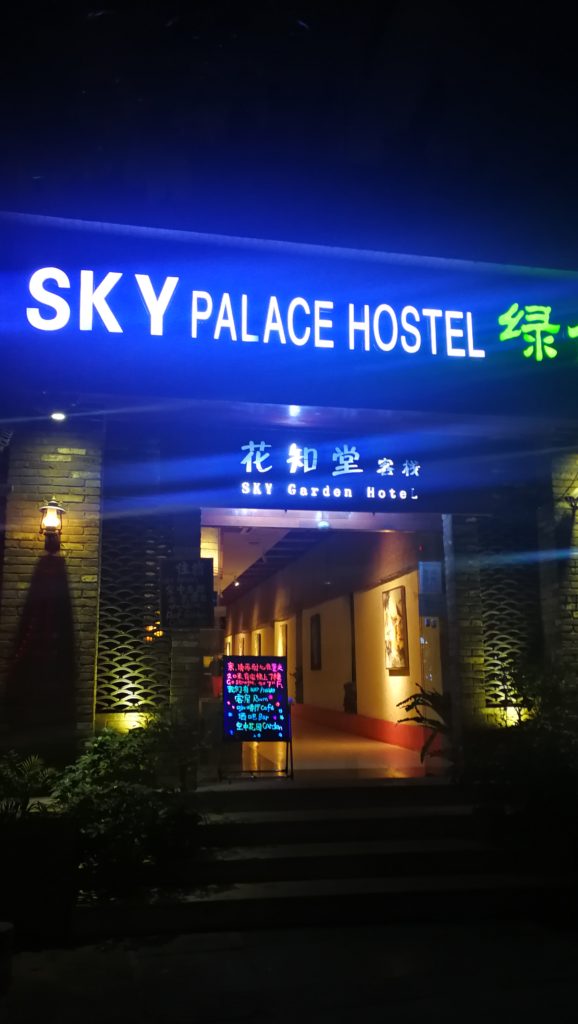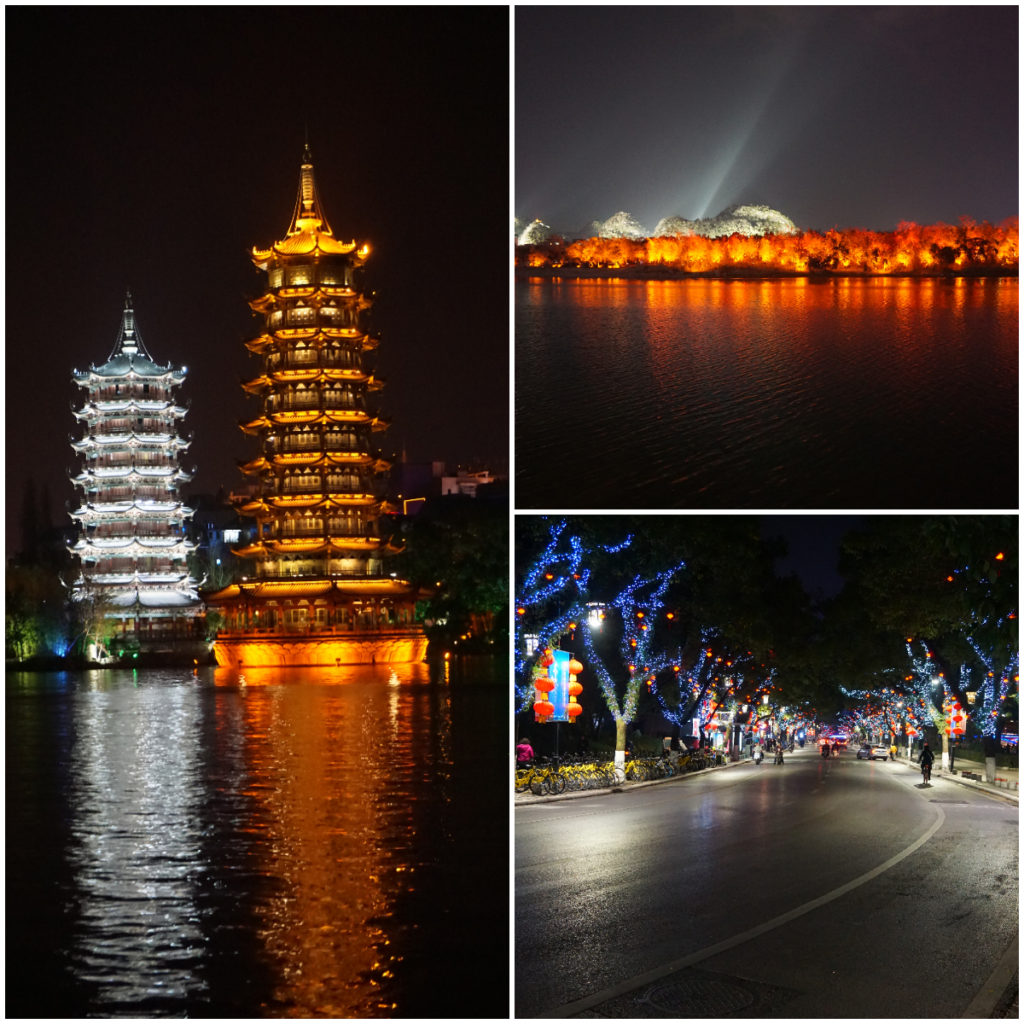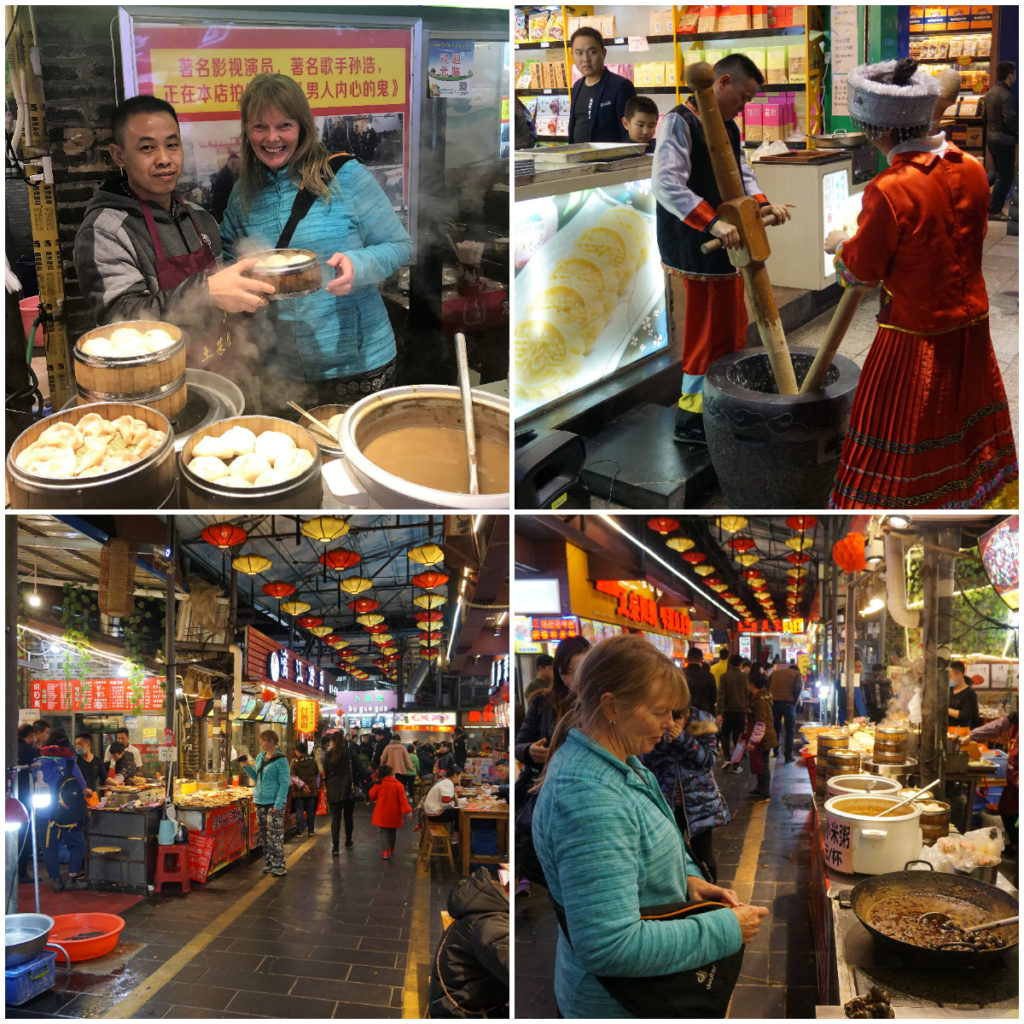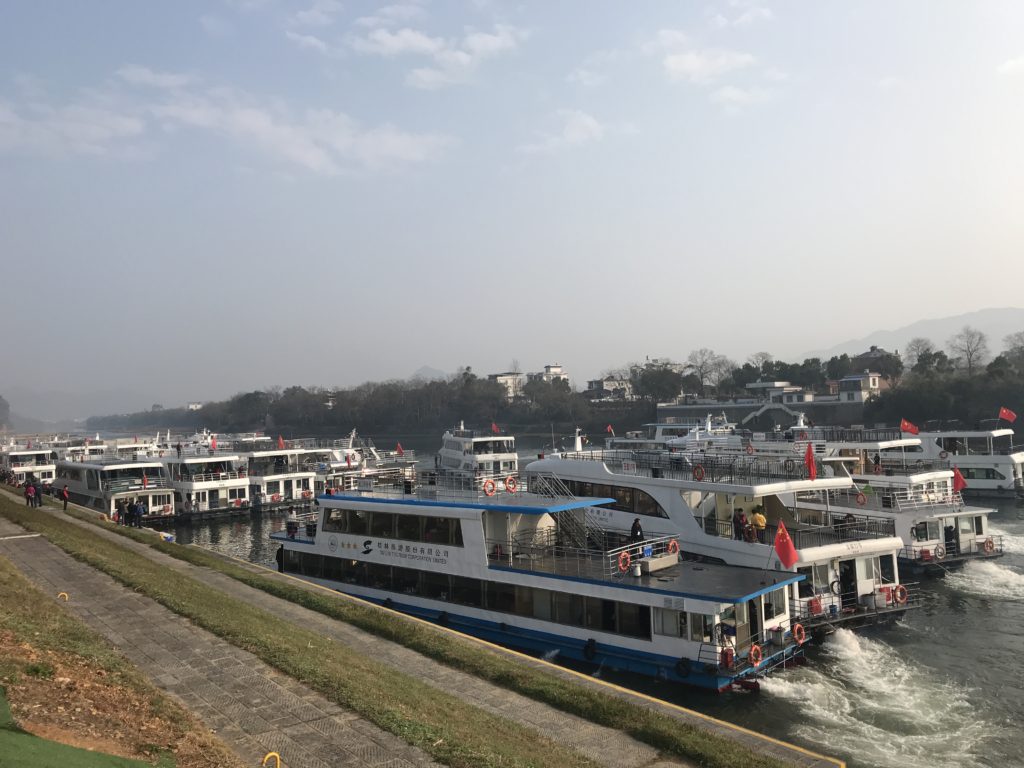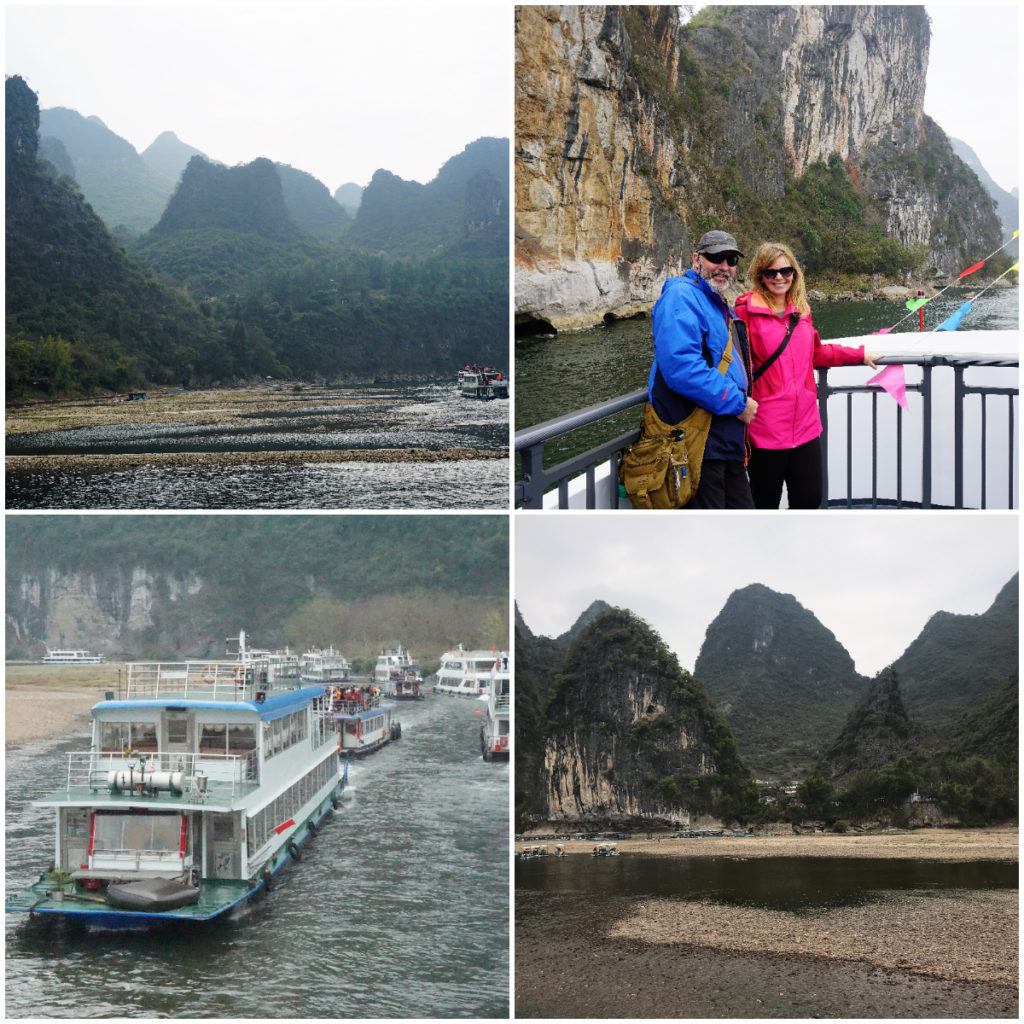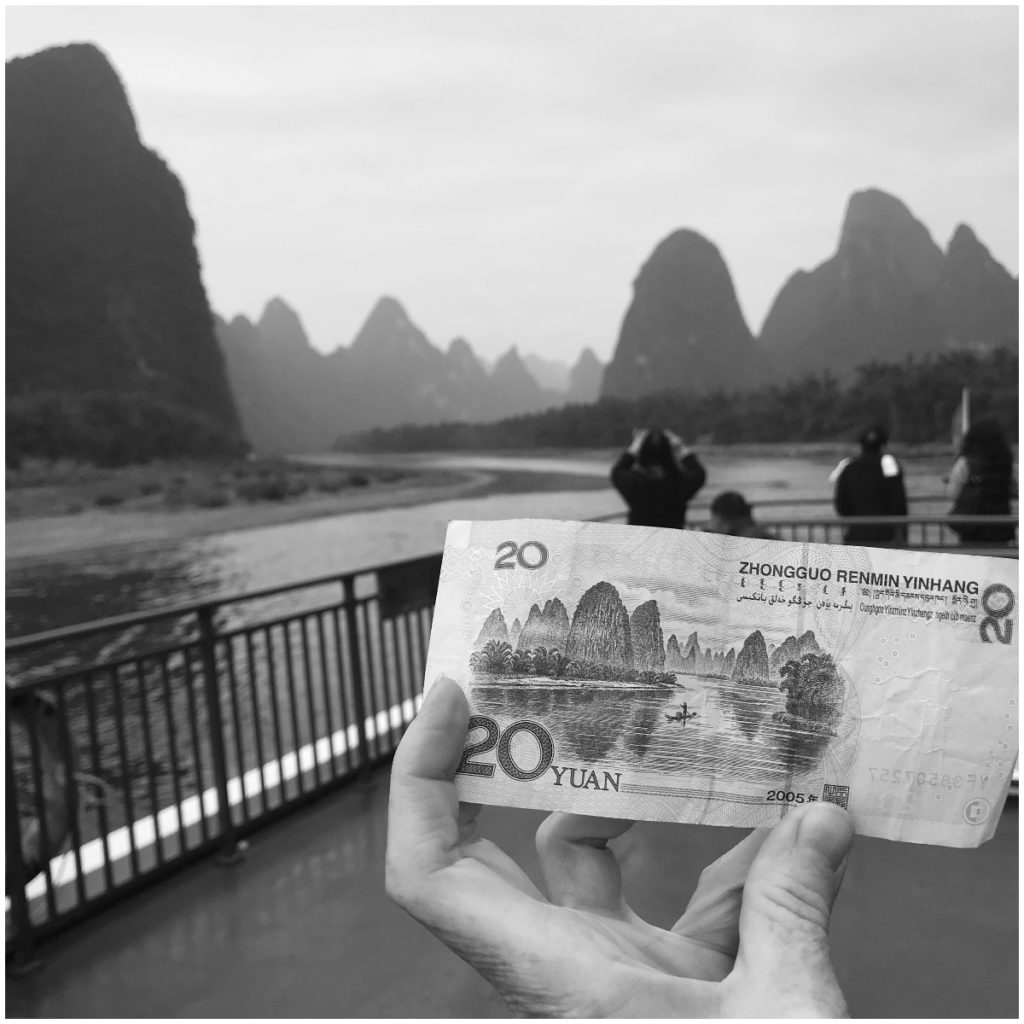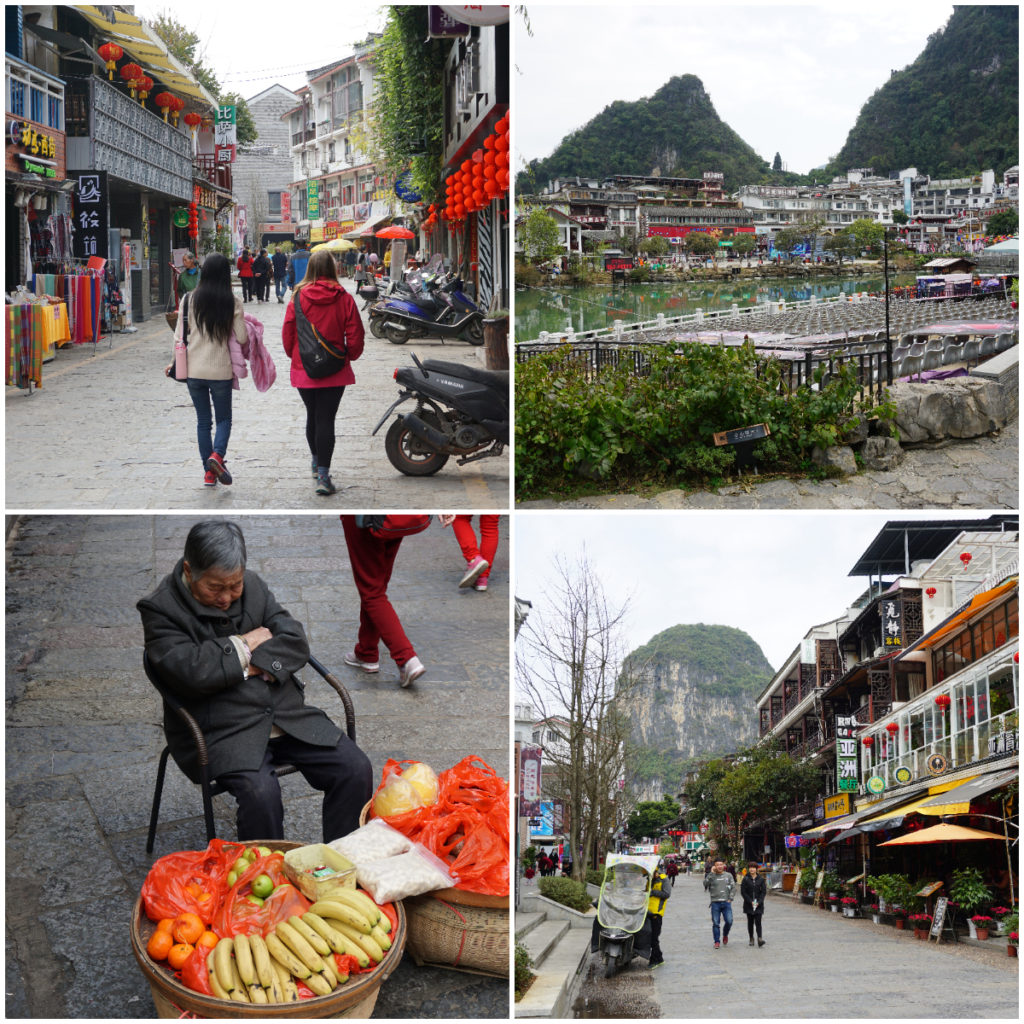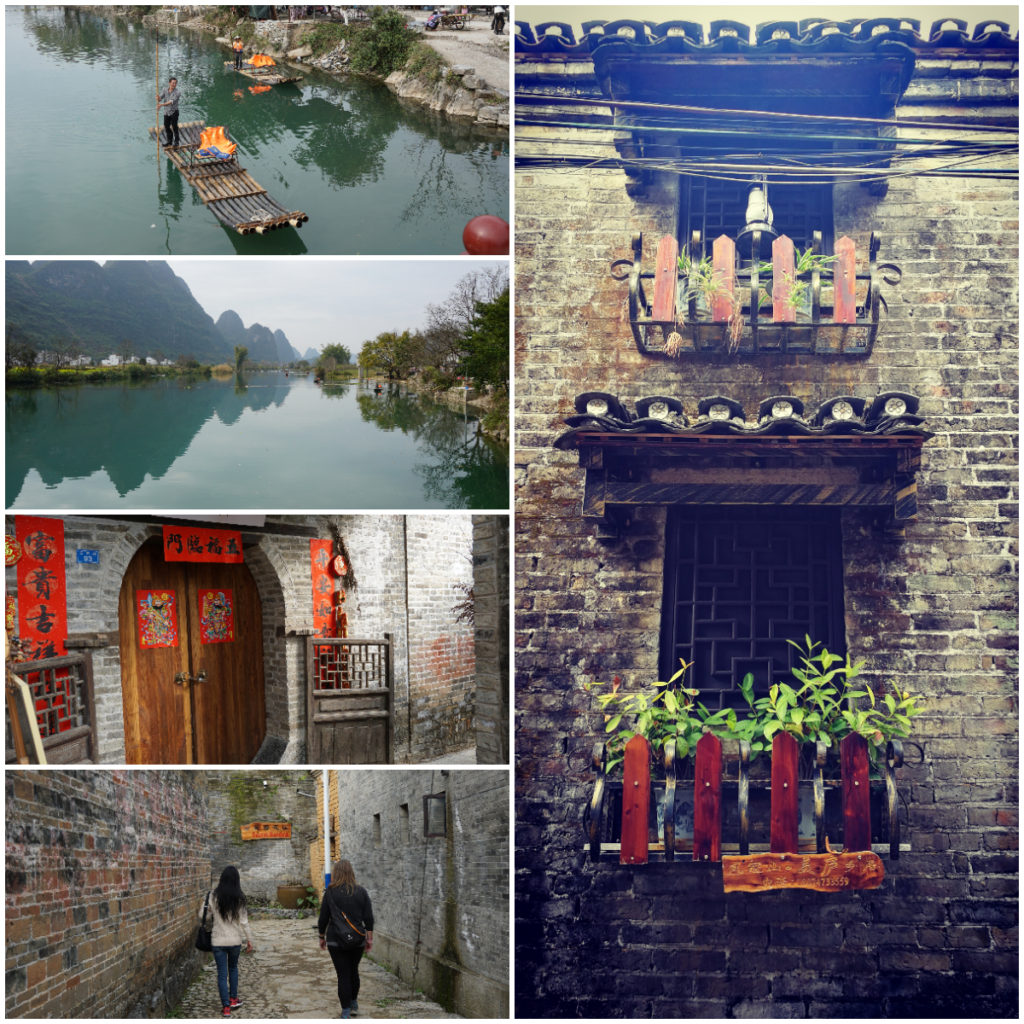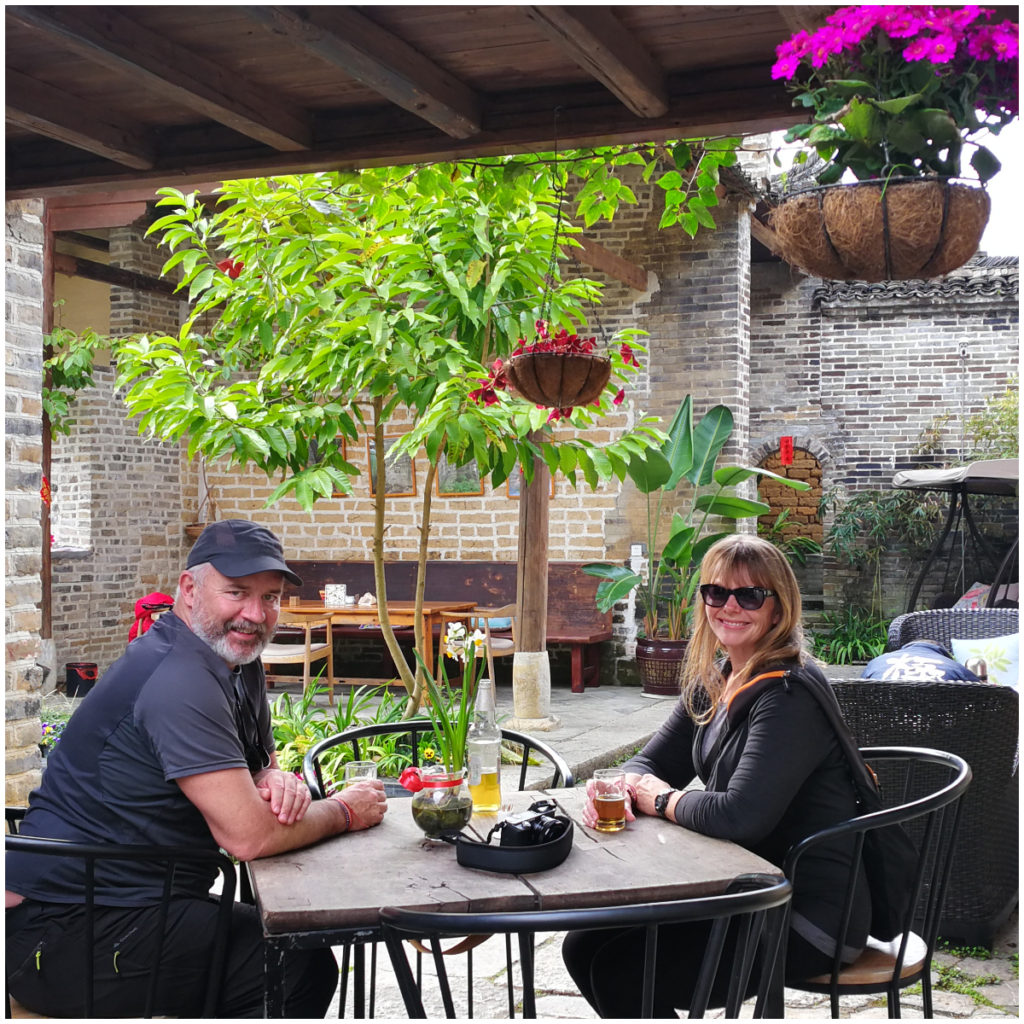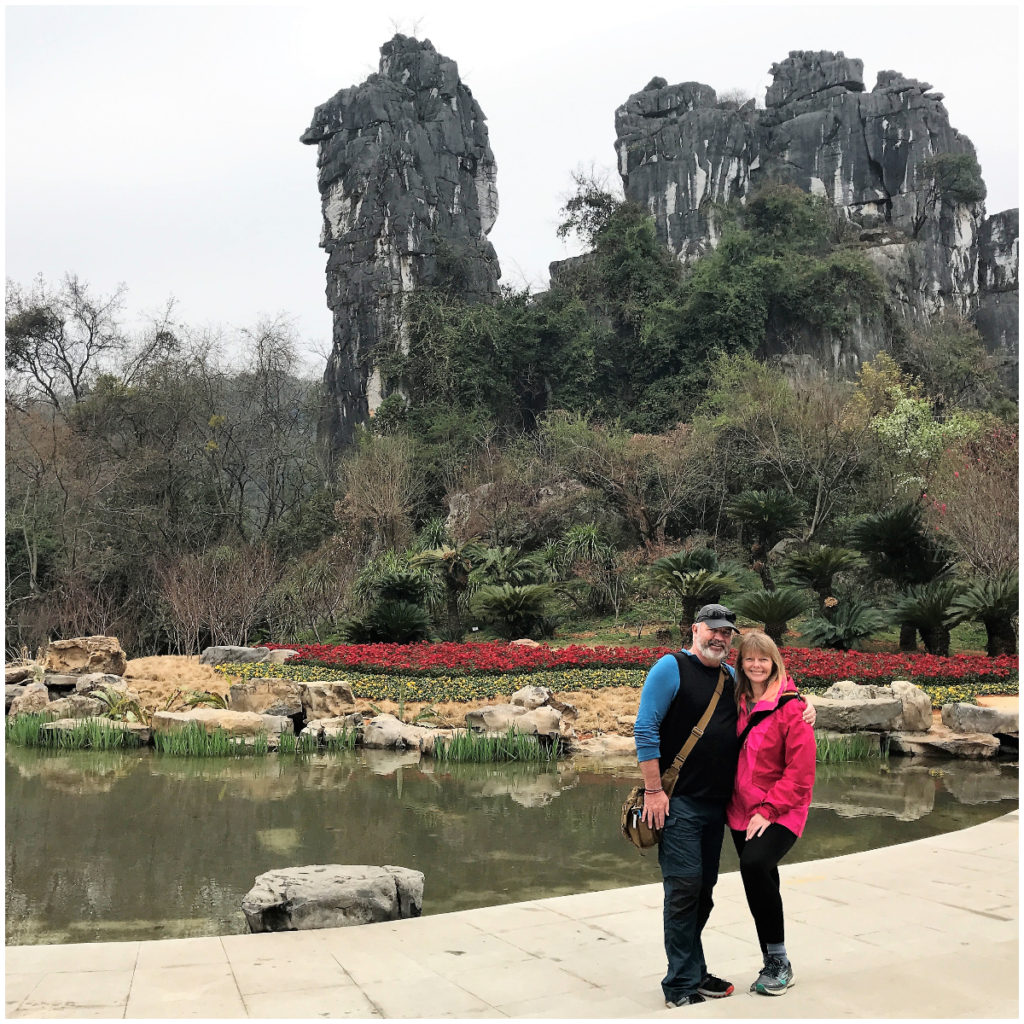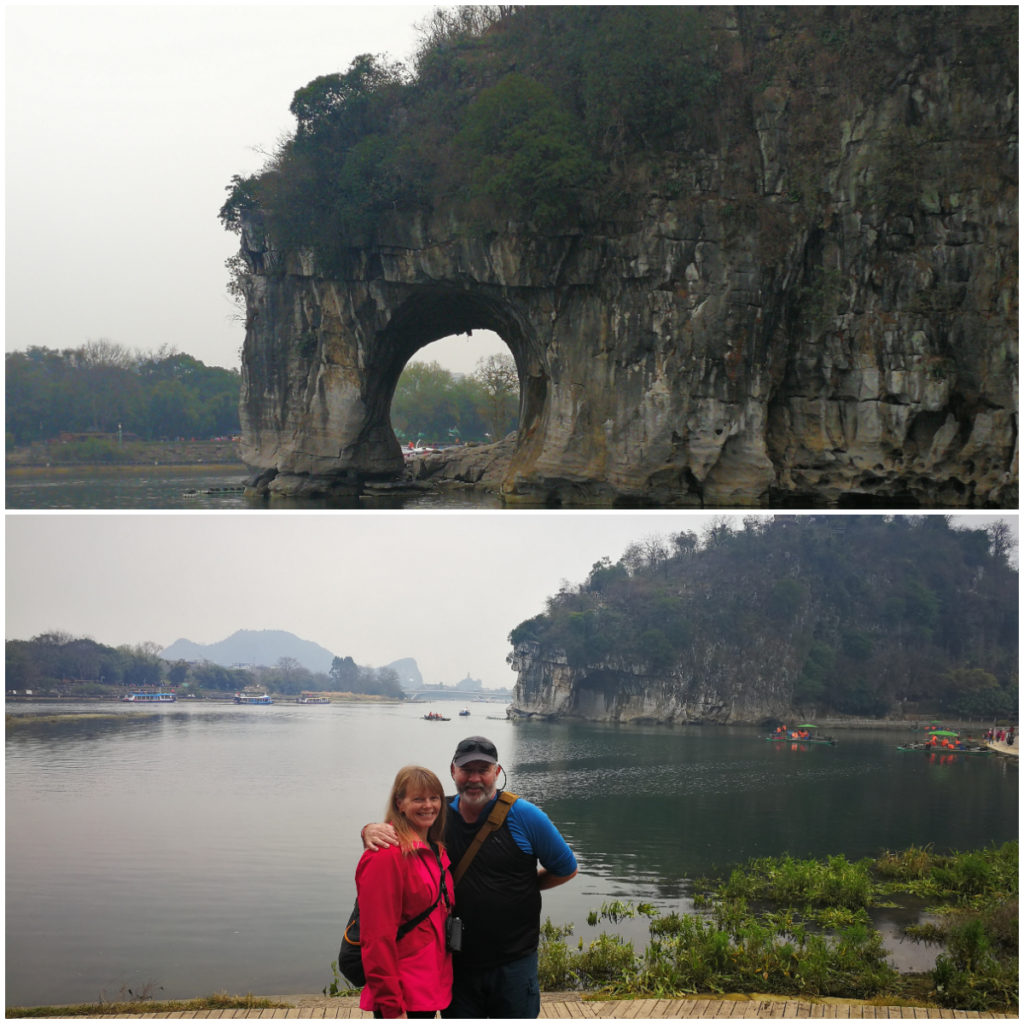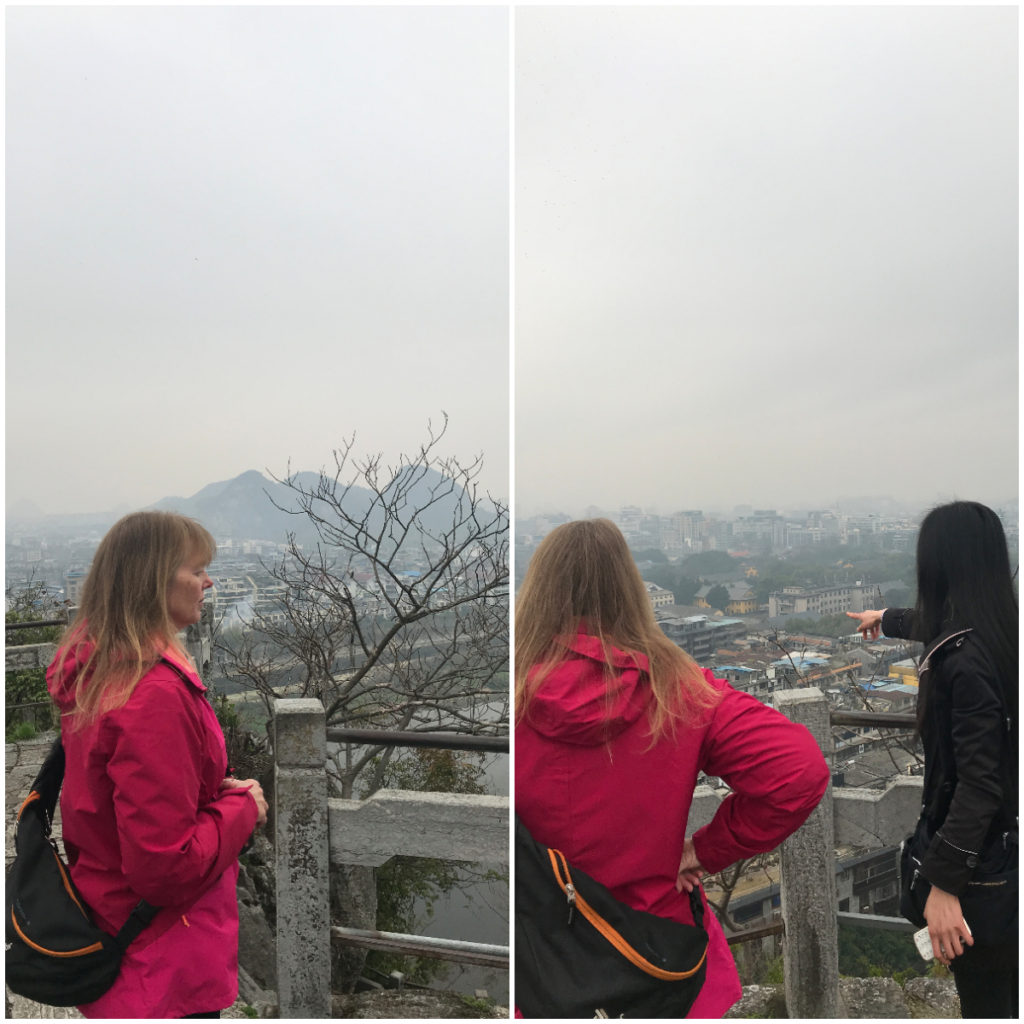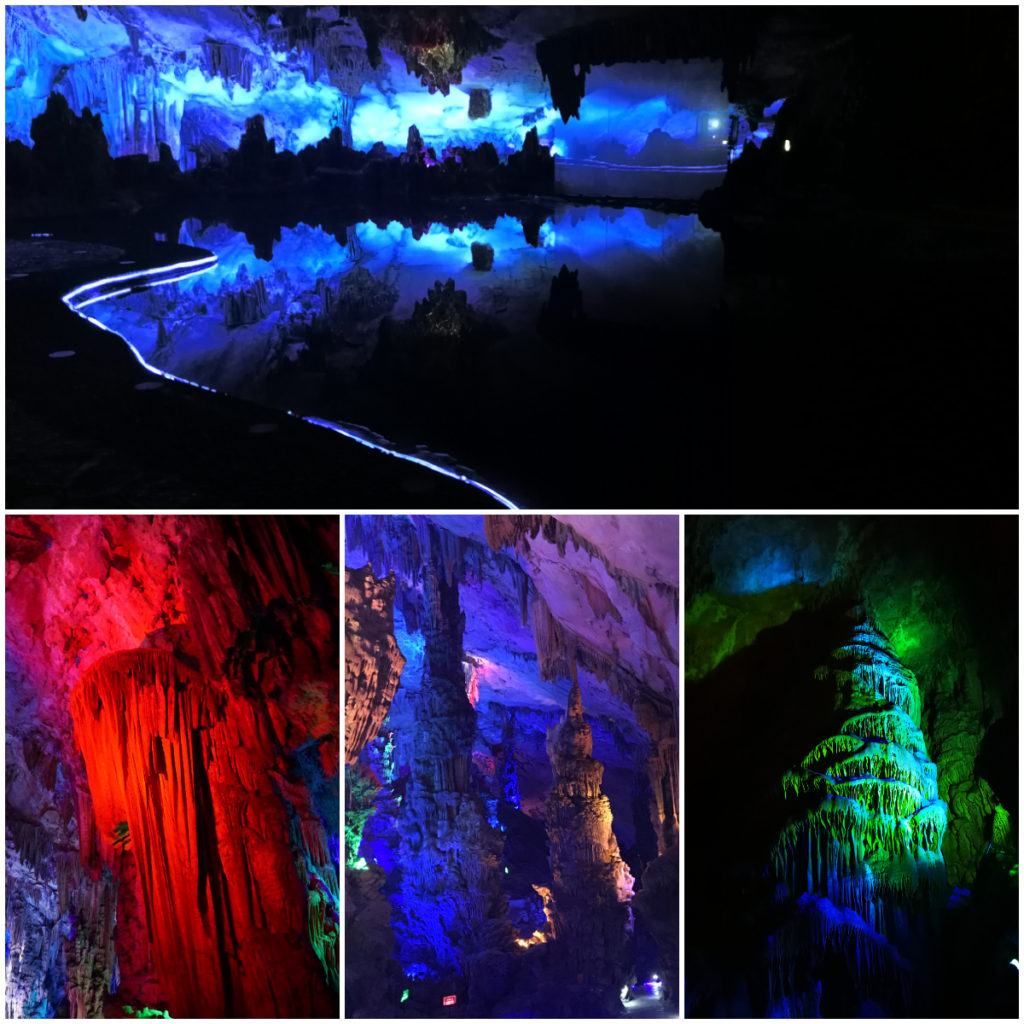So Where is Guilin?
Guilin is a really scenic city and therefore one of the best-known tourist destinations in China. There are many scenic spots within short travelling distances from the city of Guilin.
It is only about 500km northwest of Hong Kong.
It is famous for the scene which is printed on the back of the 20CYN banknote (more on this later in the blog). This spot is located on the Li River of which the scene is located.
Guilin is a lovely city. The town centre is surrounded by two rivers and four lakes and is nestled between sheer-sided limestone mountains.
The main industry in the city is clearly tourism so the city is much cleaner than other Chinese cities. Guilin is classed as ‘medium size’ city but it does have a large number of western-style hotels and restaurants.
Many Chinese domestic tourists also flock to this area. The official Spring Break for the Chinese New Year was now over. We were grateful we had missed the massive influx that happens in the area during this time each year.
Shanghai to Guilin
We decided the best way to travel to Guilin from Wuxi was by Bullet Train. In case you haven’t worked it out yet – we LOVE this mode of transport. China does it so well!
First, we had to catch a Bullet Train from Wuxi East to Shanghai. That took 55 minutes (120km) and cost us 187CNY/$40NZ for us both. We then had an hour wait at Shanghai for our Bullet Train to Guilin. This trip cost us 1387CNY/$300NZ for us both. The second leg took us 9 hours (1,500kms). We departed Shanghai at 10.02am and arrived in Guilin at 7 pm.
Click on the link below to watch a video on our highlights of our trip.
It was a fabulous trip. Just to be able to sit back and relax and watch the countryside whizz by is certainly our choice of travel. The seats are similar to an aeroplane and the ride is so smooth. It is easy to forget that you are flying through the countryside at an average speed of 300km per hour.
We took our own snacks but there is food available on board. Ladies would walk the aisles from time to time for passengers to purchase snacks and boxed meals. We got chatting (well sign language actually) to a local couple across the aisle and he was only too happy to share his Chinese Tea with us.
Accommodation Guilin
Taxi was our choice to travel to our accommodation. As we had had previous problems to communicating with taxi drivers in China, we made sure that we had the map downloaded to show the driver. Alas, this did not go as well as we had hoped. After our driver had made a couple of phone calls we managed to somehow get to our accommodation.
We booked through Agoda at Sky Garden Hotel.
Not to be confused with Sky Palace Hostel as they are actually the same place. The prices are certainly up there in Guilin and we paid 500CNY/$107NZ for two nights including breakfast. The biggest bonus was the location. Very close to the popular ‘Walking Street’ and the river and lakes.
Central Sightseeing In Guilin
Because we were so centrally located in the most touristy area of the city we were keen to wander around and take in some the locations that surrounded us.
Sun and Moon Twin Pagodas
The Sun and Moon Twin Pagodas are a real show stopper at night.
Looming up from Shan Lake, the octagonal, seven-storey Moon Pagoda is connected to the Sun Pagoda by an underwater tunnel.
They are known as Sun and Moon Pagodas because of their colours which are lit up at night. The Moon Pagoda is made of a coloured glaze and The Sun Pagoda is made of bronze. It is also the world’s highest bronze pagoda.
Walking Street (Zhengyang Road)
Located just around the corner from our hotel was the famous Zhengyang Road, or locally known as Walking Street.
It’s history dates back 1000 years and was opened as a pedestrian-only street in 2001.
It’s a paved wide street which stretches for over 1/2 km. It is extremely popular with tourists and locals and it was a great place to wander in the evenings.
It was loaded with retail shops, stalls and of course eating establishments. There was plenty of pubs, snack bars, Chinese restaurants and western restaurants.
We headed for the food halls which seem to be where the locals hung out. There were a huge number of food stalls to choose from where we could enjoy the local ‘grub’ that we have grown fond of.
What’s to See in Guilin Area
As we only had two full days in Guilin we wanted to make sure we made the most of our time.
It would have been possible for us to arrange our own transport and maybe pick up a guide somewhere to take us to the places we wanted to see. Looking at the distances of some of the locations we decided that it would be more practical to look at a two-day tour with a guide. This way we could get from place to place quicker as well as learning more about the history and details of the different areas.
Because we had had such a good experience with Travel China Guide, we decided to get them to customise a two-day itinerary. This way we could target some of the attractions that we wanted to cover. We could also get them to include an airport transfer at end of the tour. All up it cost us $572US/$782NZ. This was a lot of money for just two days but it was comparable with other companies who offered a similar tour and the itinerary was packed with most of the things on our list.
Tour Day One
The boat trip up the Li River was at the top of our list of things to do.
We got picked up from our hotel at 8 am and it was a 50-minute drive to the wharf. It was at about this time that we were pleased that we hadn’t tried to organise our own ride to the wharf or our own tickets for the boat trip.
It was supposedly ‘off-peak’ time, just after the Chinese New Year. The wharf was packed with tourists – mainly Chinese tour parties.
There were literally at least 50 boats moored up ready to go. Our guide organised our tickets and apparently, the number of the wharf and boat are on your tickets. There would be no way of us knowing that as the ticket and details were all in Chinese.
Li River
It has been said that the Li River is in the World’s Top 15 Rivers list. It has the largest and most beautiful karst landscape.
The river meanders for about 164km between lofty green peaks and sheer karst cliffs. We travelled 83km on the river from Guilin to Yangshuo which apparently is the most spectacular.
The cruise was supposed to take 3 hours but the water level in the river was extremely low. The boats really slowed down and followed each other nose to tail, keeping to the deepest parts. We could easily see the bottom of the crystal clear river. We were surprised how little draft the big boats actually needed. It seemed extremely shallow in places.
It really did seem if we were in the middle of a landscape painting as we passed hills, caves, bamboo groves and villages. Our guide was with us the whole time and gave us a constant commentary. Most of our time was spent on the upper deck to get the best view. She pointed out the different formations in the karst rocks. We both decided that we lacked imagination as she was describing the shapes the rocks formed. Sometimes we really could not see the frog, tortoise, dishpan or horses!!
As mentioned earlier, the most famous part of the river is the spot which appears on the 20CYN note.
Yangshuo
We reached the village of Yangshuo at 2 pm. Walking around this charming village was very enjoyable.
Yangshuo is visited by a large number of Chinese tourists and foreigners alike and also has a relatively large ex-pats community.
Although it caters to the tourist population we felt that it had maintained a lot of its old-world charm with its small lanes and authentic shops. This is all intermingled with your Starbucks, KFC and Burger King of course.
Many tourists use Yangshuo as a base to explore the greater area. There is so much on offer in the surrounding districts that it would something that Scotty and I would like to put on the list to revisit and spend more time. A night or two here would suit us just fine.
We met up with our driver who had dropped us at the wharf in Guilin. We travelled by car for another half hour to the small fishing village of Xingping.
Xingping is the most ancient town in the area and is very picturesque. We walked around the tiny dirt lanes, through rice paddy fields and even had time for a beer in a 200-year-old ex-family compound. This has now been turned into a boutique guesthouse/hotel. Very tastefully done and still maintaining its historical features.
It was time to head for home as it was about a 1.5 hours drive back to Guilin. We got back to our hotel at 6 pm.
Click on the link below to view the video of the highlight of our day.
Tour Day Two
We had a lot to cover off before heading to the airport in time for our late afternoon flight to Xiamen.
With our backpacks ready, we were picked up from our hotel at 8 am and headed to our first destination of the day.
Seven Star Park
Seven Star Park takes its name from its seven peaks which are within the park, which is only 1.5km from the city centre.
We wandered around the park which covers 1.3km and it is the largest park in Guilin. Within the park, there is a zoo, Flower Bridge, Camel Hill (because it looks like a Camel) and Seven Star Cave.
Elephant Trunk Hill Park
Elephant Trunk Hill, also known as Elephant Hill is located where the Li River joins the Peach Blossom River, south of the central area of Guilin City.
It definitely looks like a huge elephant stretching its trunk and drinking water (even we could make that shape out!).
Elephant Trunk Hill is the symbol of Guilin and its landscape.
As you can imagine, there was a heap of tourists wandering around the park. Our entrance fee was included in our tour but if we were travelling on our own, we would have probably been happy to take some photo’s outside the park area.
Fubo Hill Park
About 2km from Elephant Trunk Hill, towers Fubo Hill, another great scenic spot. It reaches the height of 213 metres. Half of it stands in the river and the other half on land.
Our guide walked us around the base to wander through some of the water formed caves. We saw the stairs leading to the summit of the rock. I don’t think she intended on us going up there, but we had other ideas. With her in tow, we headed for the heavens. The stone stairs were very steep and they seem to be The Stairway to Heaven.
The viewing platform at the top was an ideal spot for taking in the panoramic view of Guilin. Especially once I could breathe normally again.
The Reed Flute Cave
This was our last stop before heading to the airport. We had read mixed reviews about the Reed Flute Caves so we weren’t overly fussed about visiting them. The entrance was included and it seemed to be in the top 10 things to see in Guilin.
It was a fascinating gallery of limestone formations. The cave is full of a large number of stalactites, stalagmites and rock formations in weird shapes. These are all highlighted by multicoloured LED lighting. At times I felt that this detracted from the natural beauty and made some of it look tacky rather than enhancing.
At over 180 million years old, it has been one of Guilin’s attractions for over 1,200 years. The caves have been visited by millions of people since opening in 1962.
The cave got its name from a type of reed growing outside the entrance. The reed can be made into flutes.
Click on the link below for the highlights of the second day of our tour.
Summary of Gwilin
We are very pleased that we included a visit to Guilin. Although it is a top tourist destination we felt that we got to see a part of China that we hadn’t yet experienced since arriving a few weeks ago. It was a delight to experience the open countryside rather than cities and the more iconic sights such as the Great Wall.
We would recommend that more time could be spent in Guilin and Yangshuo warrants a couple of nights stay (or longer).
